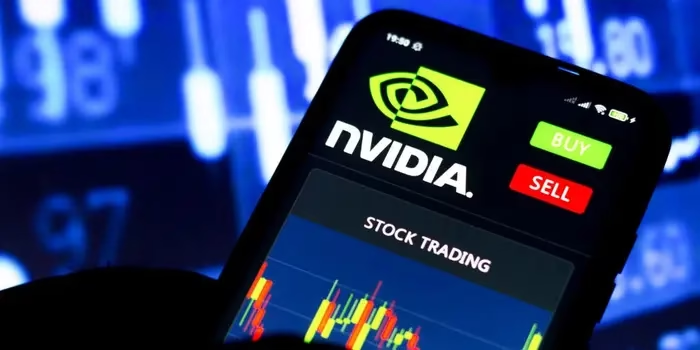Did you know that a single report can wipe billions off a tech giant’s market value in hours? That’s exactly what happened to NVIDIA when whispers of Huawei’s latest AI chip innovation sent shockwaves through Wall Street!
The semiconductor kingpin saw its stock price plummet as investors grappled with the implications of China’s tech resurgence.
NVIDIA stock has fallen approximately 19% in 2025, with recent drops of over 3% following reports of Huawei’s AI chip developments.
But what does this mean for the future of AI chips, and should NVIDIA be worried?
Let’s dive deep into this unfolding tech drama that could reshape the entire industry landscape.
Understanding NVIDIA’s Stock Volatility and Market Position
The recent turbulence in NVIDIA’s stock reflects broader concerns about the company’s dominance in the AI chip market. Shares of NVIDIA fell 2% to $108.84 in morning trading, underperforming the broader S&P 500, which gained 0.2%. This volatility isn’t just about one company’s performance—it represents the market’s anxiety about maintaining technological supremacy in an increasingly competitive landscape.
NVIDIA’s financial exposure to international markets has become a critical vulnerability. China accounted for $17 billion, or 13%, of NVIDIA’s revenue in its fiscal year 2025, making any disruption to this market segment particularly painful for investors. The company’s stock has experienced significant swings based on geopolitical developments, with shares falling 7% the day after export restrictions were announced.
The semiconductor giant’s market capitalization has been under pressure from multiple fronts. Beyond the immediate Huawei threat, NVIDIA has suffered from investor scrutiny over AI spending from Big Tech giants and Trump’s trade war. This perfect storm of competitive and regulatory challenges has created an environment where any negative news can trigger substantial sell-offs.
Despite these challenges, NVIDIA maintains its position as the world’s leading AI chip manufacturer. The company’s GPUs continue to power the majority of AI training and inference workloads globally, from ChatGPT to autonomous vehicles. However, the market is increasingly questioning whether this dominance can withstand sustained competition from well-funded rivals like Huawei.
Huawei’s AI Chip Development: What We Know So Far
Huawei’s emergence as a serious competitor in the AI chip space represents one of the most significant challenges to NVIDIA’s market position. Huawei announced mass shipments of its 910C AI chip to Chinese customers, signaling the company’s readiness to compete directly with NVIDIA’s offerings in its home market.
The Chinese tech giant has been methodically building its semiconductor capabilities despite facing severe restrictions from the US government. According to The Wall Street Journal, Huawei has approached Chinese tech firms to begin testing its new Ascend processors, indicating a strategic push to gain market share through direct customer engagement.
Huawei’s chip development timeline has accelerated significantly over the past few years. The company has invested billions in research and development, recruiting top talent from around the world, and building partnerships with domestic manufacturers. Huawei has asked some Chinese companies to conduct tests on its 910D processors, suggesting multiple chip variants are in development simultaneously.
The technical specifications of Huawei’s latest AI chips remain closely guarded, but industry analysts suggest they represent a significant leap forward from previous generations. The company has focused on optimizing performance for AI training and inference tasks, potentially offering competitive alternatives to NVIDIA’s H100 and H20 series processors.
What makes Huawei’s approach particularly concerning for NVIDIA is the company’s integrated ecosystem strategy. Unlike pure-play chip manufacturers, Huawei can bundle its AI processors with cloud services, networking equipment, and software platforms, potentially offering more attractive total-cost-of-ownership propositions to customers.
The Geopolitical Implications of China’s AI Chip Ambitions
The AI chip competition between NVIDIA and Huawei extends far beyond corporate rivalry—it represents a critical front in the broader US-China technology war. NVIDIA chips were banned from sale to China in 2022 and are two iterations behind NVIDIA’s latest Blackwell chips, forcing Chinese companies to seek alternatives or operate with outdated technology.
The Trump administration’s aggressive export control policies have inadvertently accelerated China’s domestic chip development efforts. The 2025 export controls on advanced AI chips require licenses for sales of NVIDIA’s H100 and H20 processors to China, creating a significant market opportunity for domestic alternatives like Huawei’s offerings.
These restrictions have had immediate financial implications for NVIDIA. NVIDIA reported a $5.5 billion inventory write-down in its first fiscal quarter of 2025, highlighting the cost of losing access to such a large market. The company has been forced to develop specialized chips for the Chinese market that comply with export restrictions, but these products offer reduced performance compared to their unrestricted counterparts.
China’s response has been to double down on semiconductor self-sufficiency. The government has allocated hundreds of billions of dollars to domestic chip development through various funding mechanisms, including direct subsidies, tax incentives, and state-backed investment funds. This massive financial commitment has enabled companies like Huawei to pursue ambitious development timelines that might not be commercially viable under normal circumstances.
The strategic implications extend beyond economics. AI chips are increasingly viewed as critical infrastructure for national security, powering everything from military applications to economic competitiveness. China’s success in developing competitive AI processors could reduce its dependence on US technology and potentially challenge American technological leadership in artificial intelligence.

How Huawei’s Entry Could Disrupt the AI Chip Market
Huawei’s emergence as a credible AI chip competitor threatens to fundamentally reshape market dynamics that have favored NVIDIA for years. The Chinese company’s entry brings several disruptive elements that could challenge established players across multiple dimensions.
Price competition represents the most immediate threat to NVIDIA’s margins. As a state-backed enterprise with access to significant government subsidies, Huawei can potentially offer competitive products at lower prices than purely commercial competitors. This pricing flexibility could be particularly attractive to cost-conscious customers, especially in emerging markets where price sensitivity is higher.
The geographic dimension of competition adds another layer of complexity. While NVIDIA maintains strong positions in Western markets, Huawei has natural advantages in China and potentially other markets where Chinese technology companies have established relationships. This geographic segmentation could lead to a bifurcated global AI chip market, with different dominant players in different regions.
Customer relationships and ecosystem integration present both challenges and opportunities. The chipmaker now requires a license worth $5.5 billion to export its Chinese SoCs, creating friction for customers who want to use NVIDIA products. This regulatory complexity makes Huawei’s domestic alternatives more attractive by comparison, as they face no such restrictions.
Innovation acceleration could benefit the entire industry as competition intensifies. Huawei’s entry forces NVIDIA to continue pushing technological boundaries while also compelling other competitors like AMD, Intel, and various startups to accelerate their own development timelines. This competitive pressure typically results in faster innovation cycles and better products for end users.
Market segmentation opportunities are emerging as different applications require different optimization approaches. While NVIDIA has focused heavily on training large language models, Huawei and other competitors might find success by optimizing for specific use cases like edge computing, automotive applications, or specialized industrial AI implementations.
Investment Implications and Market Outlook
The intensifying competition between NVIDIA and Huawei presents complex investment considerations that extend far beyond the two companies directly involved. The 3% drop in NVIDIA’s stock has led to immediate declines in AI-related tokens like Render Token by 4.2% and Fetch.ai by 3.8%, demonstrating how semiconductor competition ripples through related technology sectors.
Short-term volatility seems inevitable as investors try to assess the competitive threat and its implications for market share distribution. The Fear and Greed Index for cryptocurrencies dropped from 65 (Greed) to 58 (Neutral), reflecting a shift in investor sentiment driven by AI industry developments. This sentiment shift suggests broader market uncertainty about the AI sector’s future growth trajectory.
Long-term investment themes are becoming clearer despite short-term uncertainty. The AI chip market is expanding rapidly enough to support multiple successful players, potentially reducing the winner-take-all dynamics that have characterized the semiconductor industry historically. This expansion could create opportunities for investors willing to diversify across multiple AI chip companies rather than concentrating on a single dominant player.
Diversification strategies are becoming more important as geopolitical risks intersect with investment returns. Companies with heavy exposure to single markets or regulatory regimes face increased volatility, while those with geographically diversified revenue streams may offer more stable returns. This dynamic favors investment approaches that spread risk across multiple companies, regions, and end markets.
Risk assessment must now incorporate geopolitical factors alongside traditional business fundamentals. Export controls, trade tensions, and national security considerations are becoming permanent features of the technology investment landscape. Investors need to evaluate not just technical capabilities and market positions, but also regulatory resilience and political risk exposure.
The Broader AI Industry Response and Adaptations
The AI chip competition between NVIDIA and Huawei is catalyzing broader industry adaptations that extend far beyond the two primary competitors. Companies throughout the AI ecosystem are reassessing their strategic positions and making adjustments to navigate an increasingly complex competitive landscape.
Supply chain diversification has become a critical priority for AI companies dependent on specialized processors. Many organizations are actively developing relationships with multiple chip suppliers to reduce dependency on any single vendor. This diversification effort creates opportunities for emerging competitors while also providing some protection against geopolitical disruptions.
Partnership realignments are accelerating as companies seek to position themselves advantageously in a multipolar chip market. Traditional alliances based on purely technical considerations are being supplemented by relationships that consider regulatory compliance, geographic presence, and political stability. These evolving partnerships could reshape competitive dynamics across the entire AI industry.
Innovation acceleration is perhaps the most positive outcome of intensified competition. Companies are investing more heavily in research and development, pursuing novel architectural approaches, and exploring specialized applications that might not have received attention in a less competitive environment. This innovation boom could lead to breakthrough technologies that benefit the entire industry.
Customer adaptation strategies are evolving as organizations learn to work with multiple chip architectures and vendors. This adaptation requires significant engineering investment but also provides greater flexibility and negotiating power. Companies that successfully master multi-vendor AI infrastructure may gain competitive advantages in their own markets.
Regional market development is accelerating as companies recognize the need for geographically diversified strategies. The bifurcation of global technology markets is creating opportunities for companies that can successfully navigate both Western and Chinese ecosystems, while also creating risks for those too dependent on any single region.
Conclusion
The reported emergence of Huawei’s new AI chip represents more than just another product launch—it signals a potential paradigm shift in the global semiconductor landscape! While NVIDIA’s stock volatility reflects immediate investor concerns, the long-term implications extend far beyond share prices. As competition intensifies, we’re likely to see accelerated innovation, better products, and ultimately more choices for consumers.
The AI chip wars have officially begun, and the battle lines are being drawn along both technological and geopolitical dimensions. NVIDIA’s temporary setbacks may actually strengthen the company in the long run by forcing continued innovation and market expansion. Meanwhile, Huawei’s emergence validates the massive potential of the AI chip market while also highlighting the risks of technological fragmentation.
Whether you’re an investor, tech enthusiast, or industry professional, keeping a close eye on this developing story will be crucial. The competition between these tech giants will likely determine not just market share distribution, but also the pace of AI development, the structure of global technology supply chains, and potentially the balance of technological power between nations.
The winner of this competition—or more likely, winners, as the market appears large enough for multiple successful players—will help define the future of artificial intelligence itself. Smart investors and industry participants will position themselves to benefit from this competition rather than simply choosing sides in what promises to be a prolonged and transformative battle for AI chip supremacy.
Jane Lee is a versatile writer and storyteller with a passion for exploring diverse themes through her work. With a background in literature and creative writing, Jane has authored numerous articles and stories that captivate and inspire readers.


